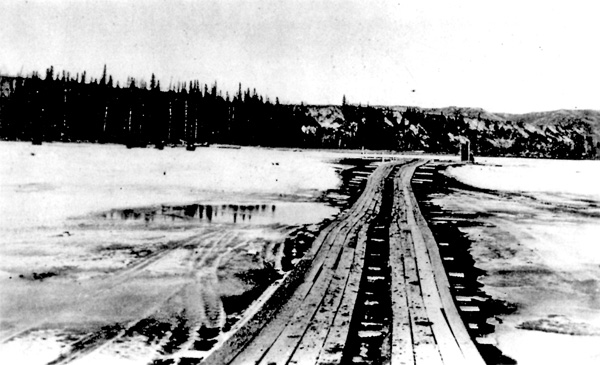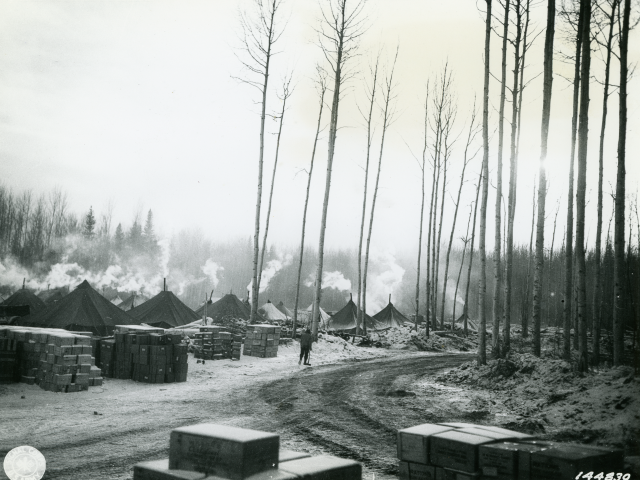In April 1942, in a desperate rush to build a land route through Yukon, General Hoge jammed thousands of soldiers into Skagway, Alaska. The Corps hit the little town like a hurricane.

A summer visitor to Skagway today can get a sense of the impact the Corps had. Arrive in Skagway in the evening when no cruise ships are in port and you find a quiet, very peaceful little town. At dusk, which is very late in the summer, one can sit on a bench and gaze up at the surrounding mountains and marvel at the peaceful and beautiful isolation of this tiny bit of civilization. The next morning four cruise ships arrive at the dock and disgorge their thousands of passengers and a tidal wave of humanity rolls through, jamming the sidewalks and the streets so tightly that it’s difficult to walk. Imagine each passenger dressed in olive drab and carrying a duffle bag and you get a real sense of what Skagway’s streets must have looked like in April of 1942.
But the people of Skagway today expect tourists and prepare for them. Skagway in April of ’42 certainly didn’t expect the tidal wave of soldiers and certainly didn’t prepare for them.
In 1942 approximately 450 people lived in Skagway. The great gold rush at the end of the 19th century had created their town. A boomtown of mythic proportions had sprouted on the precarious strip at the mouth of the Skagway River, the boundary between the towering mountains of the coastal range and the water of the Lynn Canal.
When the gold rush ended, as suddenly as it had begun, the thousands disappeared. The saloons and brothels emptied and the little city almost, but not quite, disappeared. The detritus of the boom remained—empty buildings, some of them only shacks, scattered across the little bit of flat land at the edge of the fjord. The gold rush left Skagway with a harbor, a narrow gauge railway to the Yukon interior, an enduring place in the legend of the rush—and a few people who, for a variety of individual reasons, chose to remain.









